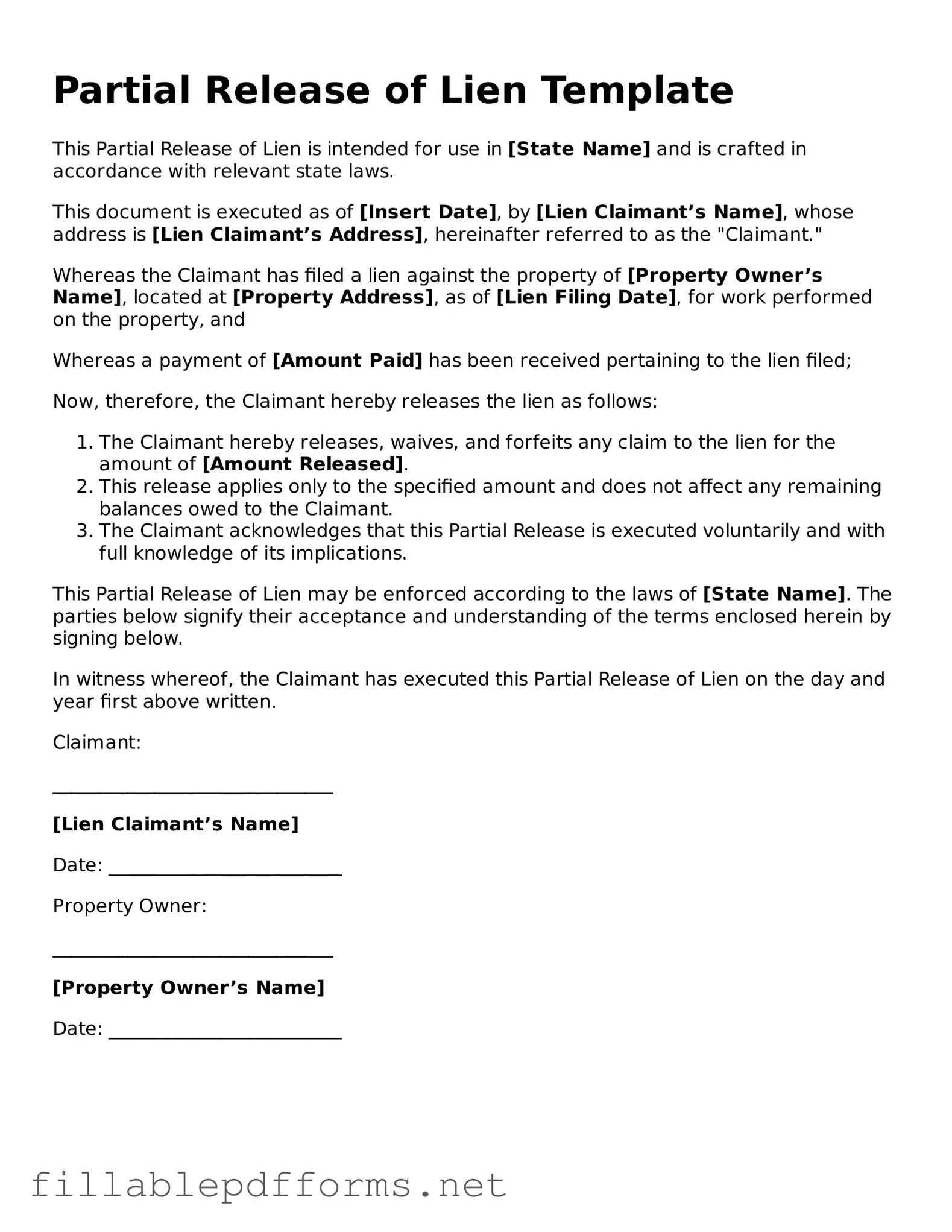When navigating the complexities of property transactions, the Partial Release of Lien form plays a crucial role in ensuring that all parties involved have a clear understanding of their rights and obligations. This form is particularly important in situations where a property has multiple liens attached, often due to various loans or obligations. By utilizing a Partial Release of Lien, a lienholder can formally release a portion of their claim on a property, allowing the owner to sell, refinance, or improve the property without the burden of the entire lien. This process not only helps to clarify the financial landscape for the property owner but also protects the interests of the lienholder by ensuring that their remaining claim is still enforceable. Completing this form requires careful attention to detail, as it must accurately reflect the specific terms of the release, including the property description and the amount of the lien being released. Understanding the implications of this form is essential for property owners, lienholders, and real estate professionals alike, as it fosters transparency and facilitates smoother transactions.
